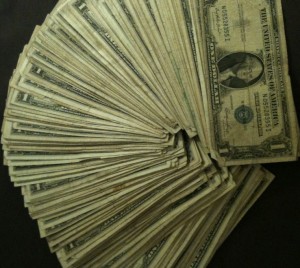In 2008, the U.S. Federal Reserve lowered interest rates to zero to prevent the financial system from locking-up and causing an economic depression. This was a helpful temporary measure for a few months. But then the Federal Reserve continued their zero-interest policy for over 5 years. This chronic price distortion to the economy has had several predictable effects:
- Savers were punished as they earn little to nothing on their money. This transfers wealth from people like retirees that should not be taking risks with their money.
- Businesses and banks were rewarded with cheap money to take on all kinds of low-paying investments, even lending money back to the government for a guaranteed profit.
- Governments were rewarded with cheap money to borrow – keeping deficits artificially low.
- The stock market boomed as profits increased, not from operations, but from lower interest rates for their loans.
Keeping interest rates at zero for so long creates a transfer of wealth from these distortions. This was confirmed recently in the Wall Street Journal, the surge in stock prices and home values has boosted affluent household wealth to a record in 2013. Although keeping interest rates low was supposed to stimulate economic activity, overall consumer spending is still down because of huge swaths of unemployed, rising healthcare costs, and consumer debts are still being paid off from pre-2008.
Keeping interest rates artificially low will end in one of two scenarios. First, interest rates will rise on their own (investors fearing inflation or lack of confidence in U.S. debt repayment), or the U.S. Federal Reserve will begin raising them on their own. Either way, the low-interest party will end and you need to be prepared when the next wealth transfer will begin.
A few suggestions for you to consider include: refinance loans now while rates are still low, be ready to sell some of your stock funds as the stock market begins to decline, avoid bonds because they will be falling in value as interest rates rise, look for floating rate investments to take advantage of rising interest rates, and put some money in investments indexed to inflation.

